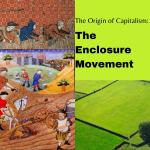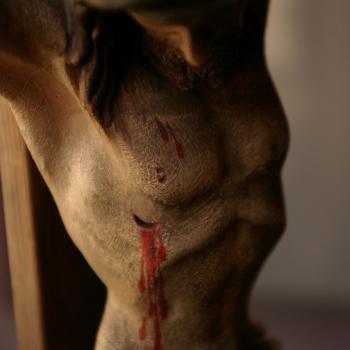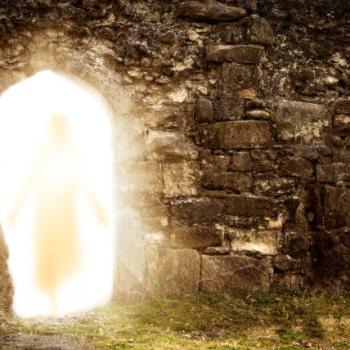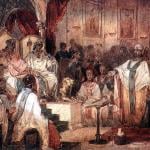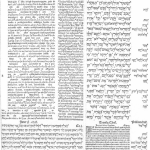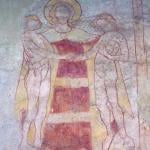
Nick Cave wants to die “inside this life … not halfway out the door in the hope of something better.” Thus an almost Christian rock star ends his long conversation with journalist Seán O’Hagan and with anyone lucky enough to have fall into his or her hands a book like Faith, Hope and Carnage. That book is the product of a series of phone interviews, lasting through most of the pandemic years.
Cave’s ups and downs, tragedies and growth through tragedy speak out of the pages of the book. But this is not a story of Cave’s life. Themes of love and loss, tradition and defiance, death and grief, despair and hope circle around Cave’s work and music. They make a kind of spirituality of artistic creation. Mysticism of belief and rational skepticism face each other over Nick’s devotion to Jesus and return to Christian practice. It doesn’t quite equate, in Cave’s mind, to being a Christian. Still, Cave says, religion “is a necessary part of what I do…. [T]here is some divine element going on within my songs.” (Wikipedia)
Changes and what doesn’t change
Nick Cave is a rock musician who early in his career was a heavy influence on varieties of punk. His band The Birthday Party earned distinction as, in some eyes and ears, “the most violent live band in the world” (Wikipedia).
Birthday Party modulated into Nick Cave and the Bad Seeds. And Bad Seeds gradually tempered that violence. Nick Cave remembers a youth in Australia, when, “My heroes [were] the chaos makers in Australian culture. It’s a sacred duty to offend” (interview with Krishnam Guru-Murthy). Cave never stopped being that guy. He just found other ways to channel the chaos and offense of an original mind.
The result in albums like The Boatman and Ghosteen is spare beauty of instrumental accompaniment and a mostly soft, baritone voice speaking in melody. Cave’s lyrics are as much images to follow as signs to corral into a thought or two.
Nick Cave on his own faith, hope and carnage, 1: Faith
Conversation is important to Nick Cave. That shows in the conversations he holds with various notable personalities that he calls “In Conversation.” Conversation features also in his blog “Red Hand Files.” There he invites questions from anyone about anything. He appears on Youtube interviews with the likes of the Archbishop of Canterbury and with journalists like Krishnan Guru-Murthy of UK’s Chanel 4 News.
Probably Nick Cave’s deepest venture into conversation is the long series of interviews with Seán O’hagan in Faith, Hope and Carnage. Conversation that is honest can change a person, and Cave says some of his ideas changed in the course of that book. Guru-Murthy in his interview pressed for an example. Cave spoke of his shift in relation to Christianity from the first interviews to the last. Here, with some paraphrasing, are some of Cave’s earlier thoughts on Christianity:
Since the pandemic (and, I think, since the death of his son Arthur), Cave says, he “felt the desire to apply myself to the practice of belief and to spiritual acceptance.” His relationship with God, he says, became “a little less fraught…. And to me the benefits are self-evident. I’d certainly be happier for it.”
By this time Cave has started going to church regularly, “practicing Christianity.” Some beliefs can be “true enough.” True enough to be of use, seems to be what he means by this “beautiful, humane expression.” He refers to his own experience with Narcotics Anonymous. There hopeless and not particularly spiritual drug addicts are asked to believe in something, to “hand their will and their lives over to something that may very well not exist. And in a great many instances, they get better…. They find that believing in something that is ‘true enough’ works throughout all aspects of life.”
Two years later
In conversation with Guru-Murthy, Cave abandons that utilitarian approach. Two years after Cave’s and O’Hagan’s original conversations, in a kind of postscript to Faith, Hope and Carnage, Cave speaks from some way farther into the territory of belief:
Religion “involves taking my belief – and my unbelief — into a sacred space and dealing with it there, rather than it being something that just lives inside my head. What I like about church is that it stands against the gods of reason and rationality. It’s a deeply strange place, and Christianity is a deeply strange religion.” Religion offers “a deep and true emotional relationship to the mystery of things” (p. 284).
Close to Christian mysticism are these thoughts:
“My rational self has all the weaponry, all the big guns – reason, science, common sense, normality – and all that far outweighs the side of me that only has suspicions and hints and signs of something else, something mysterious and quietly spoken” (p. 218-19).
Probably Cave never lost the early insight that faith and doubt can coexist, and “God … provides us with the space to doubt” (p. 72). Even the early thought that Christianity is “true enough” (I rather liked it) might acquire a more than utilitarian sense. Something like:
Christianity offers the believer a perspective “good enough” to have confidence that, however dimly, reality is in view.
On the reality of being human, at least, Nick Cave and Christian theology are more realistic than popular psychologies. People imagine that negative feelings like regret, shame, and guilt are unhealthy. Avoid them at all cost! But regret, Cave says, helps better our lives. More profoundly: The need for forgiveness is “at the very center of our lives” (p. 251). Living without regrets is denying oneself the “obvious benefits of self-forgiveness” (p. 269).
Cave’s own faith, hope and carnage, 2: Hope
The full quote at the end of Faith, Hope and Carnage, part of which began this essay, reads:
It doesn’t seem at this point in time particularly important to know what happens after we die. There is too much life to deal with. And when I die, well, I want to die inside this life. This strange, beautiful life. Not halfway out the door in the hope of something better. Is there something else? I don’t know. There are intuitions for sure, but there are some things that, for our own sanity, probably should remain beyond our understanding. It gives us somewhere to go. (p. 288)
Christian hope doesn’t hesitate, as Cave does, to speak about the next life. But the thrust of Cave’s statement comes from a very Christian theme. God created the world and called it good. Cave’s hope is for this good (“strange and beautiful” in Cave’s terms) world. With Cave I would ask, How do we affirm the goodness of this life when we’re “halfway out the door” to something else?
Cave wants to hold on to created goodness to the end. If that’s Christian (it is) and if dying is part of living, then it’s entirely Christian to die with both feet plus mind, heart, and soul “inside this life.”
From the sublime to the everyday
Creation, the first (chronologically) of Christian beliefs, supports “dying inside this life.” But Cave’s thought is not foreign to Christianity’s last hope, either. The Christian dimly seen image of the “next life” isn’t so removed from this one, as Cave and a lot of believers might think. Jesus is coming again! … To this world! … At the end of the present age, when God will reign over a renewed creation! … New heavens and a new earth, earth’s promise of beauty fulfilled, her peoples freed, her powers redeemed, her tragedy vanished away!
That hope animates all the hopes that get a partial fulfillment in what Cave says comes upon us as a sacred duty – to make a small piece of the world a better place.
“So,” Seán O’Hagan says at the end of this long interruption of Cave at work, “the important thing for you is how you live your life?”
And Nick Cave, with an exquisite touch, comes down from the heights and into the moment: “The important thing for me right now is to write a song.”
Cave’s own faith, hope and carnage, 3: Carnage
In a chapter called “A Series of Ordinary Carnages,” Nick Cave dwells awhile on the violence of his early performances (p.173-74). The “wanton power” of the music, and the frenzy of the crowd. Walking on the hands of the audience. The sexual energy and confronting imagery. The knee drop, “a beautiful, sacred act – to fall on your knees and howl your heart into a microphone.” He hadn’t done a full knee drop for a while, but, “I would hate to be too old to do that.”
The raw carnage in Cave’s early music and the later measured violence interpret Caves’ own changing experiences. Carnage wears many faces. For Cave it includes:
- A rebellious youth (a sorrow to his mother, who stood by him nevertheless),
- A youthful confrontational attitude toward the world, including his own audience,
- 20 years addicted to heroin (during which he continued working),
- The loss of two sons, especially that of Arthur, the son of his second and current marriage.
- Pandemic, a second major change for Cave, as for all of us. Time for reflection, including the soul-searching that went into Faith, Hope and Carnage. Covid also took away the chance to take on tour the album, Ghosteen. That recording spoke from the heart about grief and Arthur’s death.
Carnage and artistic work for Cave
An important theme in Faith, Hope and Carnage is the demanding process by which Nick Cave creates his music – another kind of carnage. Cave doesn’t have the luxury of spontaneous inspiration while walking in the woods on a fall day. He sits at his desk from 9 to 5, letting one word or image call up another until there’s a string that might or might not fit with another string. (I’m putting his descriptions into my own words.) The result might or might not be meaningful enough to fit into the first draft of a song. What the song itself means might or might not become clear or worthwhile – most likely not until after practicing or even performing it.
O’Hagan asks if the process gets easier with experience, and the answer is that it does not. Each new song begins an unraveling of the old Nick Cave. I mentioned the “coming” of words and images, which sounds like inspiration. But Cave says in a Red Hand Files post, “I have found that the muscle of the imagination is strengthened by resistance, discipline, and order.” it’s 99 percent hard work. (Impressive to an amateur creator like me, whose slow, painful writing process consists largely of false starts, wrong turns, and almost any excuse for a distraction.)
Cave thinks of carnage, destruction, and chaos as the seeds of something new. That seems to be true for the author himself, and – in a small way, but maybe more than that – it could be true for the many end users of Cave’s creations. As one who’s often said he likes all kinds of music, except rock and country, I feel a surprising urge to become part of that large audience.


